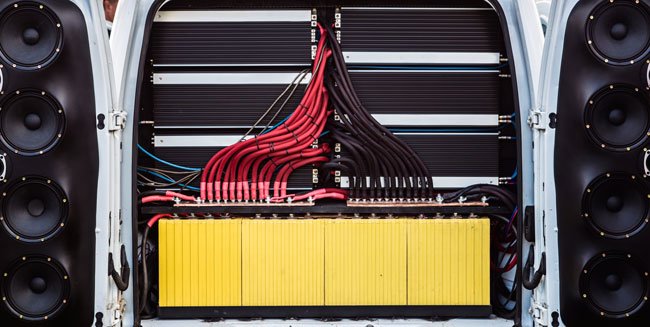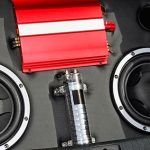Any car audio enthusiast knows that a sound system without a great amplifier is not complete. If the system has a subwoofer, especially, you need an amplifier that will bring the best out of the entire system. You are on course to get rid of mediocre sound from your car audio system.
The variety of amplifiers available on the market today has made choosing and installing the ideal amplifier for your car audio system a tough job. The decision you make about which amplifier to use will significantly impact the kind of sound you get from your car audio system as well as the total cost of the desired audio quality upgrade.
As always, we are here to help. We will assist you to answer one of the most pressing questions:
Which are the differences between a 4-channel and a 5-channel amp, and which is better?
Our research has shown that many car owners find choosing between 4-channel and 5-channel amplifiers challenging. Usually, there are some situations where either of these two types of amplifiers can be used. Choosing one option over the other depends on your overall goal.
We will explore common application examples of 4-channel and 5-channel amps hoping that you will find a situation that relates to your needs, so that you can decide which type suits you better. First, let’s see the differences between a 4-channel and a 5-channel amp.
Differences between 4-Channel Amp and 5-Channel Amp
i. Number of separate Channels
As obvious as the naming suggests, a 4-channel amp puts out power in four separate channels. Correspondingly, a 5-channel amp provides power for 5 separate channels. For both types of amps, the amount of power to each channel is equal, assuming no bridging is done.
ii. Flexibility
When installing an amplifier, it is helpful to think not only about the current amplification needs of the audio system but also its future needs. If you are planning to add more sound drivers in your system in the future, installing a 5-channel amp today will give you a greater level of flexibility than a 4-channel amp.
iii. Space and cost savings
The consideration of space and cost is most significant when you are faced with the options of installing a 4-channel amplifier plus a mono amp or a 5-channel amp. This is a very common situation for many car audio enthusiasts who want to power four mid-range speakers and a subwoofer.
In a case where space is limited, you’d better go with a 5-channel amplifier as it eliminates the need to install two separate amplifiers. Besides, the total cost of adding a 5-channel amp (including all acquisition and installation costs) is more likely than not to be lower than the cost of installing two separate amps (a 4-channel and a mono amp).
iv. Bridging options
Many 4-channel amps can be bridged. Bridging involves combining two channels into one, where the newly created channel has half the ohms as the single channels that make it. So, you can bridge a 4-channel amp into a 2-channel or a 3-channel configuration. A 2-channel setup would result from combining the four channels into two pairs. This setup can work well when you want to power two powerful full-range speakers. For a 3-channel configuration, you combine two channels into one to power a subwoofer, and use the remaining two channels to power two mid-range drivers separately.
5-channel amps are built to provide complete system amplification. Thus, even though they are also bridgeable, not many people find the need to bridge them. A 5-channel amp will offer four channels dedicated to mid-range speakers (usually car doors) and one channel for a subwoofer.
A powerful 5-channel amp is an easier solution for a system with a big subwoofer as it saves you the trouble of bridging. A bridged 4-channel would still do well in such a system, but you’ll have to consider the challenges and downsides of bridging if you choose this option.
It’s important to remember that not all amplifiers can be bridged. Thus, if you are specifically intending to use a bridged 4-channel amp, make sure that you check bridgeability status of all amps in your consideration before purchasing one. Further, bridging an amp changes its impedance, so you want to be careful about these changes to avoid damaging your speakers or even the amplifier itself.
Pros and Cons
See below a summary of the advantages and disadvantages of each of the two amplifier types:
4-Channel Amps
Pros
- Considerable savings on installation space and time compared to using two separate amps
- Can be bridged to power a subwoofer and leave extra channels for two mid-frequency drivers
- Offers more flexibility than 3-channel and 2-channel amps in terms of how many speakers you can have in a system
- Add quite a punch in the bass especially when bridged
Cons
- Inadequate for a car with 4 door speakers and a subwoofer
- Offers less flexibility (when you want to add more speakers) compared to 5-channel amps
5-Channel Amps
Pros
- Saves installation space and time compared with the options of installing more than one amps
- Has a channel specially dedicated to the subwoofer
- Better than 4-channel amps for car audio systems that have a larger subwoofer
- Offers more opportunities for including additional speakers in future
- Suits a wide variety of systems
Cons
- More expensive than 4-channel amp from the same brand
- Some are not bridgeable
4-channel amp vs. 5-channel amp: which should I use?
This question doesn’t have an easy this-one-or-that-one kind of answer. Your situation dictates the ultimate choice of amplifier to use. The following examples of situations will help to get some light on which of the two types of amps suits different situations better.
A. Less than four mid-range speakers
In the event that you have three or less speakers in the system, with or without a sub, you are free to use either a 4-channel or a 5-channel amplifier. The decision here is a matter of personal preference, and probably comparisons about the budget required for either option.
B. Four car door speakers & subwoofer and ample installation space
If your system has four car doors and one subwoofer, a 4-channel amp together with a 1-channel amp (mono amp) can be used as long as the amps satisfy the power needs of the speakers. Also, there is no problem with using a 5-channel amp in this case if its power handling matches that of the sound drivers in the system.
C. Four car door speakers & subwoofer and limited installation space or experience
With the same system as above, but now with limitations related to installation space, budget, time, or expertise, a 5-channel amp wins. 5-channel amps are easier to install compared with the option of a 4-channel amp plus a mono amp.
4-channel and 5-channel amps are designed to offer the advantages that multiple amplifiers (2-channel and 3-channel amps) offer, but now in a single unit. Despite having many similarities, 4-channel and 5-channel amps have subtle differences that call for thoughtful decision-making when one is faced with the decision of settling on the most appropriate amp for their system.
This article has provided a critical look into differences as well as the pros and cons of 4-channel and 5-channel amplifiers. Different possibilities where one amplifier type is better than the other have also been explored. Hopefully, you can now see how either of the two amp types relate to your amplification situation and needs.
You may also read: Marine Amp vs. Car Amp: Major Differences and FAQs
Michael Evanchuk is a San Francisco-based sound engineer with 20 years’ experience installing, troubleshooting, and repairing commercial, automotive, and household sound equipment. Evanchuk owns an auto stereo center, where he offers highly competitive car audio installation and repair services. He has written dozens of articles on different sound engineering topics, all of which have been published in leading journals, blogs, and websites.





